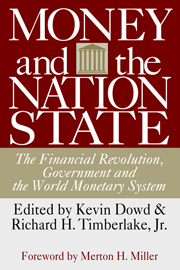| The Wall Street Journal published a slightly edited version of this letter on January 11, 2000, under the title, "The Beauty of a Parallel Currency." The WSJ published a related letter by Prof. Hanke on January 18, 2000, which also appears on this website. |
Dear Sir:
Ecuador is buried under multiple crises. And as Mr. Thomas T. Vogel Jr. reports, Ecuador’’s currency crisis finally forced President Jamil Mahuad to declare a national state of emergency ("Emergency Is Declared in Ecuador Amid Protests" January 7, 2000).
In an attempt to conserve its dwindling foreign reserves, Ecuador floated its currency, the sucre, last February. The sucre hasn’’t floated on a sea of tranquillity, however. In the last 12 months, it has lost more than 70% of its value against the dollar. To extricate Ecuador from this currency crisis, President Mahuad announced on December 23, 1999 that he was considering either tying the sucre to the dollar via a currency board or dumping the sucre and replacing it with the greenback.
Then late Sunday, the President indicated that he would pursue the dollarization option. Mr. Vogel accurately reports the sentiment of many economists whose claim is that either option "would be nearly impossible for Ecuador without massive support from the U.S. and multilateral lenders like the International Monetary Fund." And that "such support is unlikely unless Ecuador mounts major economic reforms..."
These claims echo what has become an entrenched dogma in Washington, namely that "a currency board is unlikely to be successful without the solid fundamentals of adequate reserves, fiscal discipline and a strong and well-managed financial system, in addition to the rule of law" (The Annual Report of the Council of Economic Advisers, 1999). These preconditions for success are nothing more than a canard thrown up by those who oppose either currency boards or their close cousin, dollarization.
Since currency boards were first introduced in 1849, they have always met with success, providing sound, convertible currencies. And in most cases, the currency boards (or "dollarization") were introduced where none of the preconditions for success existed. That was certainly the case when John Maynard Keynes installed North Russia’’s currency board in 1918. And it has also been the case in the 1990s, when Argentina, Estonia, Lithuania, Bulgaria and Bosnia introduced currency boards and Kosovo, East Timor and Montenegro granted foreign currencies legal tender status.
My recent experience in Montenegro, where I am President Djukanovic’’s adviser, is edifying. Last year, after enduring the ravages of the world’’s worst currency, the Yugoslav dinar, Montenegro decided to introduce a sound money regime. Many economists again declared this would be impossible because Montenegro did not satisfy any of the preconditions. On November 2, 1999, Montenegro successfully introduced a parallel currency system, one in which the German mark was made legal tender and allowed to freely float alongside Montenegro’’s other legal money, the dinar. All this was accomplished quickly and without massive support or guidance from the IMF. Indeed, Montenegro isn’’t even a member of the IMF.
Unfortunately, President Mahuad failed to provide a draft law that clearly spells out exactly how Ecuador should go about dollarizing its economy. In light of its meager foreign reserves, Ecuador should follow Montenegro’’s lead and introduce a parallel currency system. This could be accomplished by allowing the Ecuadorian sucre to retain its current legal status and freezing the supply of the sucres at current levels. That would require a new law that prohibited the central bank from issuing any new sucre liabilities. In addition, the new law would make the dollar legal and require that the sucre and dollar float freely against each other, without any government interference.
Under such a setup, a much-needed hard budget constraint would impose itself automatically in Ecuador. Indeed, the central bank would be put out of business. It would no longer be capable of extending credit to the fiscal authorities, state-owned enterprises or banks. In consequence, Ecuador’’s currency crisis would come to an abrupt halt and its unruly politicians would be forced to get serious about long-overdue economic reforms. Dollarization via a parallel currency system would be technically feasible and desirable in Ecuador. Whether it is politically feasible remains to be seen.
Sincerely yours,
Steve H. Hanke
Professor of Applied Economics
The Johns Hopkins University
Baltimore, Maryland









